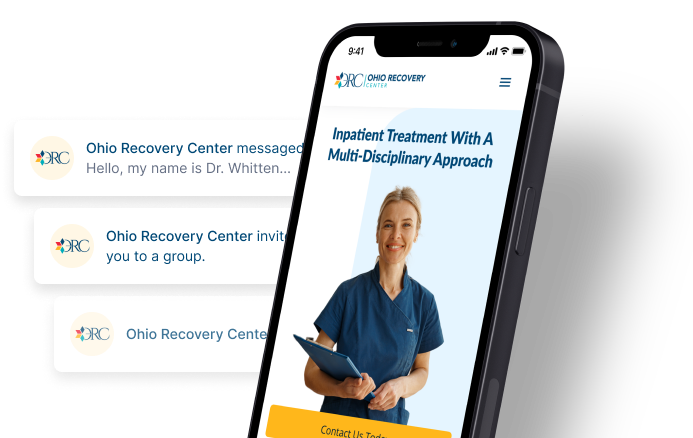What Does Oxycodone Look Like? | Oxycodone Identification

Medically Reviewed By: Manish Mishra, MBBS

Written by: Fikret Terzic MD, MS
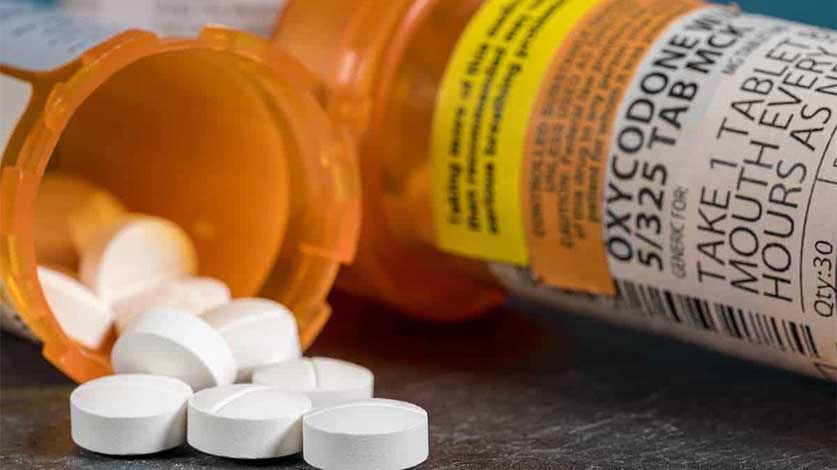
When dealing with substance abuse, it can be important to know what a drug looks like so you know what to stay away from. It also helps you identify what’s a legitimate oxycodone pill and what’s a counterfeit pill that may be cut with other dangerous substances like fentanyl.
However, the safest way to get oxycodone is through a legitimate prescription from your healthcare provider.
OxyContin (the brand name for oxycodone) is a semi-synthetic opioid that’s typically used to treat severe pain. But despite its medical use, it has a high potential for abuse and can lead to physical dependence and addiction.
Oxycodone Shape
Oxycodone most commonly comes as a round tablet. The dose and color may change but this shape is pretty universal. You may also see certain doses in oval or elliptical shapes.
The prescription drug can also come as a liquid and as a capsule but some of these combine oxycodone with other drugs and aren’t purely oxycodone alone.
Oxycodone Color
When oxycodone comes as a tablet, it can be found in a wide variety of colors. What color it is can depend on the dosage and the manufacturer.
Yellow
OxyContin comes in a yellow, round, extended-release tablet and is usually a 40 mg dose. It also will either have “OP 40” or “OC 40” imprinted on each pill.
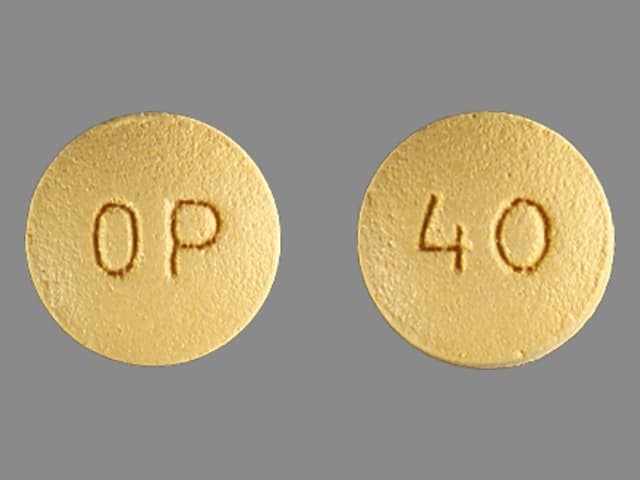
Green
OxyContin also comes in an 80 mg green, round, extended-release tablet. It will either have “OP 80” or “OC 80” imprinted on each pill. The “OP” or “OC” will be on one side of the tablet and the “80” on the other side.
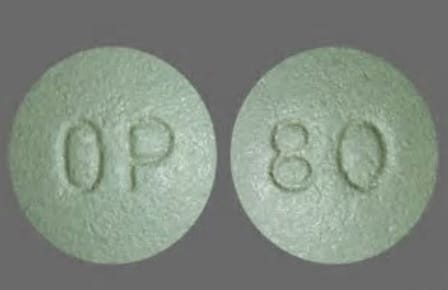
Red
OxyContin can also be found as a 60 mg red, round tablet that is an extended-release formulation and crush-resistant. It usually has “OP 60” or “OC 60” imprinted on each tablet.
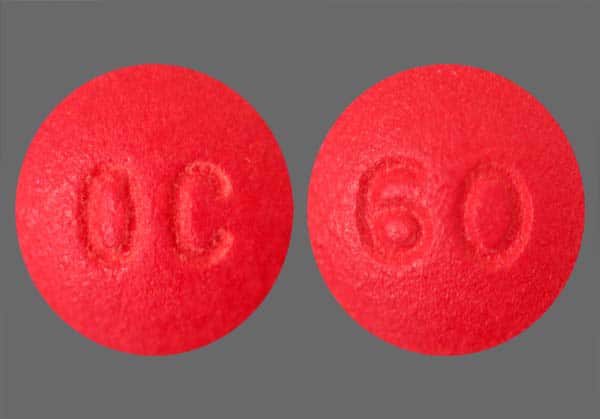
Brown
The prescription opioid painkiller can also come in a 30 mg dose. It’s brown, round in shape, and is an extended-release formulation. Each pill has either “OP 30” or “OC 30” printed on each side.
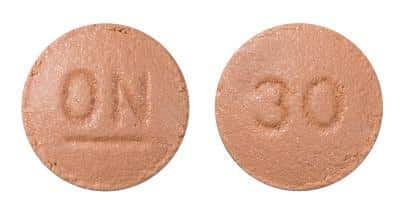
Pink
OxyContin can also be found as a 20 mg pink tablet. It’s round in shape, crush-resistant, and has either “OP 20” or “OC 20” on one side of each pill.
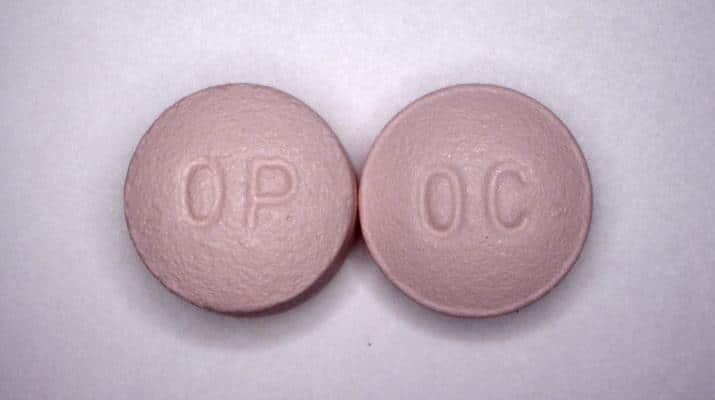
White
There is also a 10 mg OxyContin tablet that is round in shape, white in color, and an extended-release formulation.
On one side of each pill, you’ll see “OP 10” or “OC 10” imprinted.
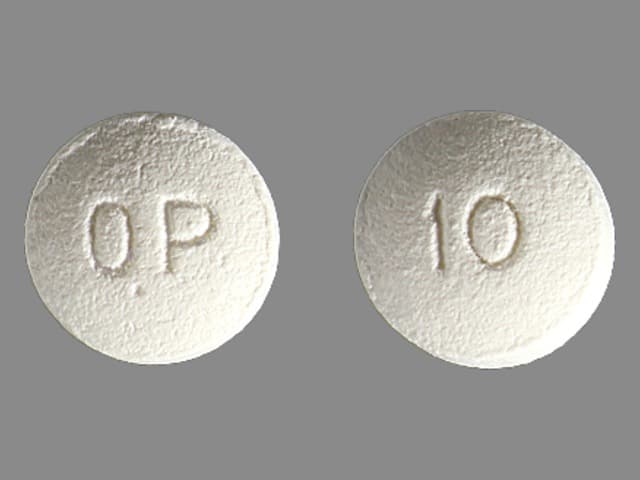
Gray
You may also be able to find a round gray OxyContin prescription pill. It consists of a 15 mg dose and usually has either “OP 15” or “OC 15” printed on one side of the pill. The letters and numbers are on opposite sides of the pill.
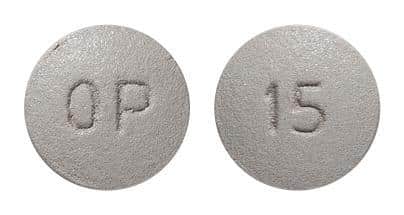
Blue
OxyContin can also come in a 160 mg elliptical/oval tablet that’s blue in color and has “OC” printed on one side and “160” imprinted on the other.
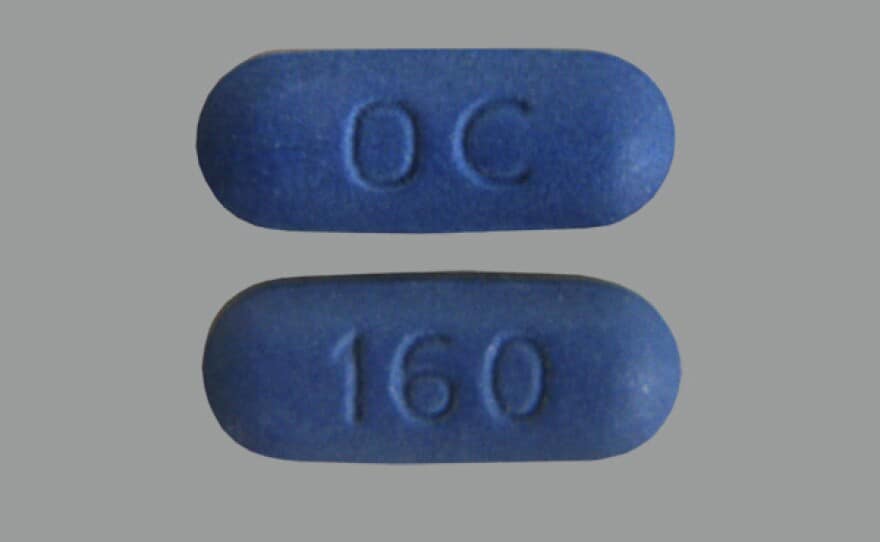
Side Effects Of Oxycodone Abuse
Beyond what the drug looks like, it can also be important to know the side effects of OxyContin. If you’re abusing the drug, these side effects can become even more intense and serious.
Some of the most common side effects can include:
- dry mouth
- stomach pain
- drowsiness
- headache
- nausea
- constipation
- mood changes
Oxycodone Overdose
When abusing OxyContin, you greatly increase your risk of an oxycodone overdose. This can often occur unintentionally when someone is simply desperate to ease their chronic pain and keep taking pills.
But no matter the reason, taking a higher dose than your body can handle can lead to very serious symptoms and even overdose death. OxyContin, in particular, has played a significant role in the ongoing opioid epidemic.
The signs and symptoms of an opioid drug overdose can include:
- stomach pain
- vomiting
- weak pulse
- drowsiness
- coma
- seizures
- respiratory depression
If you notice any of these signs and symptoms in yourself or someone you know, you need to call 911 immediately. At the hospital, they will likely give you naloxone (Narcan) which quickly reverses an opioid overdose.
Oxycodone Addiction Treatment
There are several forms of addiction treatment for oxycodone addiction, but treatment likely starts with a detox program. During these programs, medical professionals help you withdraw from the drug and provide medication to ease withdrawal symptoms as they occur.
Once you’re stable, you move on to inpatient or outpatient treatment where you go to therapy and support groups and receive treatment for any co-occurring mental health issues you may have.
If you or a loved one is struggling with a substance use disorder related to opioids, please contact us to learn about our inpatient addiction treatment options.
- Drug Enforcement Administration (DEA) — Drug Fact Sheet: Oxycodone https://www.dea.gov/sites/default/files/2020-06/Oxycodone-2020_0.pdf
- Drug Enforcement Administration (DEA) — Oxycodone images https://www.dea.gov/galleries/drug-images/oxycontin
- National Library of Medicine: MedlinePlus — Oxycodone https://medlineplus.gov/druginfo/meds/a682132.html
- National Library of Medicine: StatPearls — Oxycodone https://www.ncbi.nlm.nih.gov/books/NBK482226/
